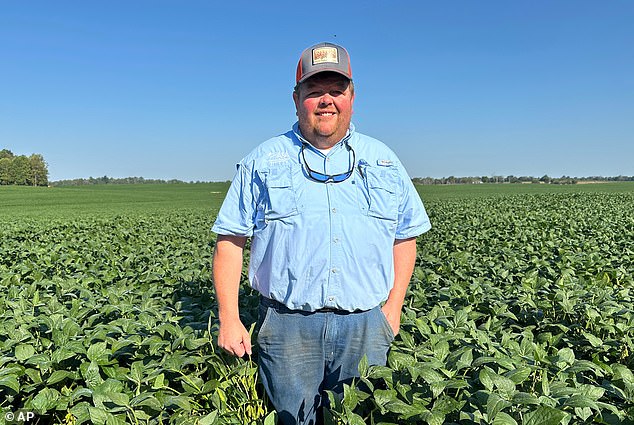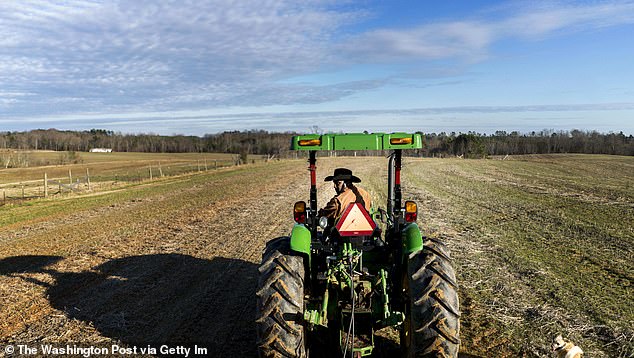Farmers — a key voting bloc that helped propel President Donald Trump back to the White House in the 2024 election — are struggling.
In the past three months, US farm bankruptcies have surged to 93 filings, more than double the same quarter last year.
Soybean producers have been hit the hardest, largely due to the ongoing trade war between Washington and Beijing.
For years, American soybean farmers shipped nearly a quarter of their $60billion crop to China.
But Beijing responded to Trump’s tariffs with 20 percent levies of its own, making US products uncompetitive.
Imports from America have plunged to nearly zero, with Chinese buyers turning instead to Argentina and Brazil.
Farmers who planted months in advance to meet Chinese demand are now forced to foot the bill. In Illinois, soybean growers expect to lose about $64 an acre this year.
To keep more farms from going under, Trump is weighing $10 billion to $14 billion in bailout funds.

Caleb Ragland, a Kentucky farmer, is happy that President Trump is worried about the plight of American farmers, but doesn’t like ‘being used as a bargaining chip’ in the trade war
‘The Soybean Farmers of our Country are being hurt because China is, for “negotiating” reasons only, not buying,’ he said in a Truth Social post.
Trump said he is meeting with Chinese President Xi Jinping in four weeks, and said the soybean trade will be a ‘major topic of discussion.’
The President has floated the idea of sending some cash from America’s collected tariffs to the farmers.
‘We’ve made so much money on Tariffs, that we are going to take a small portion of that money, and help our Farmers,’ he added.
Caleb Ragland, a Kentucky farmer who serves as president of the American Soybean Association, welcomed Trump’s recognition of their challenges, but criticized the broader strategy.
‘It’s just unfortunate that we’re being used as a bargaining chip in this trade war that’s not of our own doing,’ he said.
Farmers were already under pressure before the trade fight.
Domestic prices have slumped as growers try to unload a glut of supply, even as food costs for consumers have soared. On top of that, many producers are struggling to hire workers amid stepped-up deportation efforts.

American farm bankruptcies have risen this year as the trade war between America and China intensifies

President Trump is considering a $10billion to $14billion bailout for American farmers, including potentially using money taken in from the tariffs. He has bailed out US farmers in the past, sending $12billion to farmers during the first tariff fight with China
Government aid could help farmers survive the year, but most say they’d rather rely on markets than subsidies.
‘All farmers are proud of what they do and they don’t like handouts,’ Robb Ewoldt, an Iowa-based soybean producer, said.
‘We’d rather make it with our own two hands than have it handed to us.’
Trump has deployed this tactic before: in 2018, during his first administration, he sent soy farmers a $12billion bailout after China similarly restricted purchases of American agriculture.
But Ragland and the American Soybean Association are urging a quick end to the trade war.
‘US soybean farmers have been clear for months: the administration needs to secure a trade deal with China,’ he said last week.
‘China is the world’s largest soybean customer and typically our top export market.’
Share or comment on this article:
Farm bankruptcy surge forces Trump into $14bn bailout plan to save his voters’ livelihoods and keep food on tables
